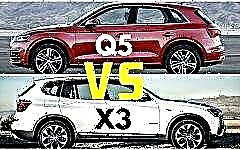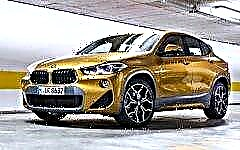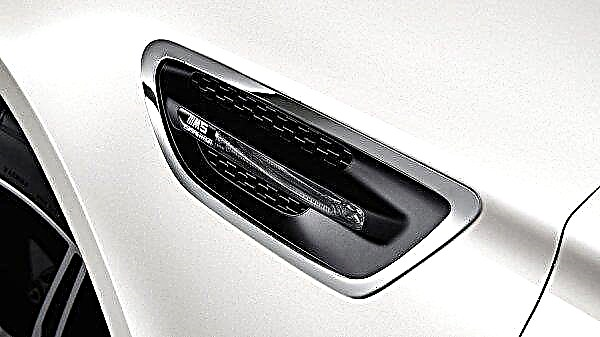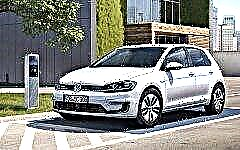

The content of the article:
- In the beginning there were ... chicken eggs
- Volvo or Jacob
- Courage symbol
- Volvo and alternative fuels
- Innovators
Spinning, spinning and rolling - under this slogan the car company Volvo appeared on the Swedish market in 1915, emerging from the parent wing of the largest engineering corporation SKF. It has gone from a beloved national brand to a banal division of the Chinese octopus Geely. How was the recognizable brand born and what is the history of its formation in the world annals of the automotive industry?
In the beginning there were ... chicken eggs

Assar Gabrielson, after receiving a bachelor's degree in economics and business, intended to become the head of his father's business - the import of Russian chicken eggs. And his interests would never have rushed into the automotive sphere, if not for the revolution in our country in 1917, which destroyed all trade relations.
His diploma allowed him to become a sales representative for the industrial giant SKF, which manufactures parts and assemblies for automobiles. There he saw how great the future of the automotive industry is, both as an element of technological progress and as a profitable commodity. But the American cars supplied to the country were unsuitable for the rather harsh Swedish climate and not the most passable roads. Then Gabrielson had the idea to create his own model, adapted to local conditions.
Gabrielson had an idea, an entrepreneurial streak too, now a competent technician was needed to make the project a reality. And in the bowels of the same corporation where he worked, he met an engineer, a graduate of the University of Technology Gustav Larson. He had already gained experience in the British automobile company and thoroughly studied the design of the engines.
The partners created a new car from scratch, not using other people's prototypes: Larson personally drew a sketch of the future model, including its engine, and Gabrielson, meanwhile, went around factories one after another in search of top-class components.
In the creation of the first prototype, which the colleagues planned to present to potential investors, they invested their own funds and made a number of loans.
The engine, born from under Larson's hand, was similar in general design to the American versions, but had significantly less weight and dimensions, and also consumed a significantly lower amount of fuel. Its production was entrusted to the marine engine manufacturer Pentaverken, who perfectly coped with the task. And the appearance of the future car was presented by the popular Swedish landscape painter Helmer Mas Olle.
In 1926, the first Swedish car was born - a phaeton, created by the hands of two enthusiasts.
Volvo or Jacob

The name Jacob (Jacob, Jacob, Jacob) always pops up when mentioning the history of the concern. This name is awarded to the first production car and gives it unthinkable legends. Such a car did exist, but it was only one of the first batch of a new automaker.
They say that the companions entered into an agreement with each other on the Catholic holiday - St. James's Day, therefore they named their first creation with a fateful name.
Researchers of the brand's life path refute these speculations. In fact, since the time of the Vikings, it was customary even to give names to any inanimate object in order to thus gain power over them. True Scandinavians Larson and Gabrielson decided not to deviate from the traditions of their country, although they treated them with a certain amount of intelligent humor. For example, they strongly opposed the gloomy black color that most cars of the time were painted with. Therefore, they dared to experiment with various shades, catchy and impressive, giving the finished product the appropriate names.
The red model was named "Larsson" in honor of the Swedish artist of the same name, each of whose paintings had a bright accent in red paint. The greenish-blue car has logically become the Little Mermaid, becoming on a par with the national symbol of the country.
Where did Jacob come from? The companions did not overwhelm the general public and nevertheless produced a black car, which they named in memory of the German theosophe, who did not disdain mysticism - Jacob Boehme. He got such an honor for once said the words that black is a mystery, an inexplicable sacrament. The phrase fits perfectly with the incredibly chic 4-door creation with leather interior and convertible top, capable of speeds up to 90 km / h.
Courage symbol

The company's logo is one of the most enduring in the automotive world, which has gone through the years of evolution in almost unchanged form. The capacious name, the slogan, was proposed by the SKF board of directors, which has invested in the start-up car makers.
The term Volvo translated from Latin has several similar meanings - roll, roll, spin.
In addition to the ease of memorization and pronunciation in any country and in any language, he simultaneously announced the bright future of the new machine, and its roots, coming from ball bearing production. And the emblem on the nose of the models was supposed to emphasize the reliability of real Swedish metal and the masculinity of the brand, created for fearless, active people. Hence the symbol of iron, the masculine principle and the god Mars, fixed on the lattice with a simple but decisive metal strip. The primitive solution has become a globally recognized hallmark of the Volvo brand.
Volvo and alternative fuels

During the war years, Sweden adhered to neutrality, but this did not rid it of all the hardships of that time. Gasoline was in short supply, demand for cars was falling, production had to somehow keep afloat. And Volvo started producing gas generator sets, which it began to equip its product with.
In addition, at the very beginning of the war, she bought out a company that produces aircraft engines, and then - a production for the manufacture of transmission parts. This maneuver, along with the supply of four-wheel drive models for the military units, allowed the company to exist comfortably in difficult years for the whole world.
At the same time, the leadership did not completely abandon the development of civilian vehicles, therefore, by the end of the war, it was ready to surprise its customers with a new model.
True, despite the extremely low price that attracted a lot of buyers, it turned out to be not so easy to establish a full-fledged production. Mass strikes took place in steel mills, as a result of which raw materials were not supplied or went with huge delays. I had to hastily establish contacts with American suppliers and order steel from overseas.
Thus, since the first demonstration of the new PV444 model in 1944, it was possible to assemble cars for sale only by 1947. But the public was not in vain waiting for the start of sales - the car gained such popularity that other European countries began to actively order it.
Innovators

Enthusiasts of their business Larson and Gabrielson sincerely wanted to make a real, high-quality product, reliable, worthy. Therefore, they never used other people's ideas and did not stop there. They developed, tested and brought to the world the latest 6-cylinder engine. Then they proceeded to think over the competent soundproofing of the cabin and the muffler, all wheels were equipped with brake pads, and they began to design the radiator grille and aerodynamic body.
All these events are actively increasing the brand awareness, for which even the economic crisis of the 30s passed unnoticed.
And in the 50s, Volvo, one of the first car companies, throws all its aspirations on the safety of the car, driver and passengers, making it one of the key areas of its activity. Within the corporation, a special division is being created, which still exists today, which is studying various emergency situations and options for increasing the reliability of the machine.
As a result, almost all of the passive safety systems that are now available in the car world, drivers are obliged to Volvo.
Already back in 1927, the company's engineers began to use unbreakable windshields equipped with wipers, by 1944 they were made multilayer, at the same time reinforcing the steel frame that protects the passengers. And in 1958, it was the Swedes who patented those same 3-point seat belts, they were the first in the world to equip the cabin with side airbags.
Finally, 1984 was marked by the system, without which it is difficult to imagine any modern car, known as ABS.
One of the latest slogans of the Volvo corporation says that besides their cars, there is a lot of good things in life. Studying the history of the brand, I would like to paraphrase that Volvo is one of the best events in our life.
Volvo











